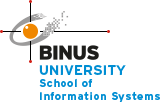PLANNING IN THE AGILE AUDIT PROCESS

Planning is a foundational element in the Agile audit process, enabling effective, iterative, and value-focused audits. Unlike the rigid and linear nature of traditional audit planning, Agile planning is flexible and aligns with Agile methodologies to adapt to changing needs. Here’s an overview of how planning is approached in Agile auditing:
- Define Objectives and Scope
- Set Specific Goals: Clearly outline the audit’s purpose, whether it involves assessing compliance, managing risks, or improving processes.
- Emphasize Value: Concentrate on areas that bring the most value to the organization, adhering to Agile’s focus on customer-centricity.
- Limit Scope: Define clear boundaries for the audit to ensure it is actionable and manageable in iterative cycles.
- Engage Stakeholders: Collaborate with auditees, management, and other key parties to gather input and ensure alignment.
- Prioritize Key Objectives: Focus on high-priority areas based on a thorough risk assessment and organizational impact.
- Collaborate with Stakeholders
- Involve Key Players: Include management, team leads, and auditees in discussions to align on goals and expectations.
- Understand Workflows: Gain insights into the team’s Agile practices, including ceremonies like sprint planning and daily stand-ups.
- Foster Trust: Build transparent and cooperative relationships between auditors and teams to encourage open communication.
- Establish an Iterative Audit Plan
- Divide the Audit: Break the audit into smaller, manageable tasks or iterations that align with Agile cycles.
- Coordinate with Agile Sprints: Schedule audit activities to integrate seamlessly with sprints or project milestones, minimizing disruptions.
- Risk-Based Prioritization: Focus on areas of high risk or significant organizational impact first.
- Set Sprint Goals: Clearly define what each sprint or iteration should achieve.
- Create a Task Backlog: Develop a prioritized list of audit tasks, including:
- Risk assessments
- Control testing
- Data analysis
- Stakeholder interviews
- Report preparation
- Allocate Resources: Assign responsibilities to team members and ensure adequate tools and resources are in place.
- Adopt a Risk-Based Approach
- Conduct Risk Assessments: Identify and prioritize significant risks to focus audit efforts effectively.
- Focus on High-Risk Areas: Devote more time and resources to critical areas with potential high impact.
- Reassess Regularly: Continuously review and update risk assessments throughout the audit process.
- Develop Flexible Timelines
- Adjustable Scheduling: Create a timeline that accommodates changes in findings, shifting priorities, or team needs.
- Ongoing Refinement: Regularly revisit and adjust plans to respond to emerging risks or organizational changes.
- Allocate Resources and Leverage Tools
- Assign Roles: Clearly define team member responsibilities for specific audit tasks.
- Use Agile Tools: Utilize software like Jira, Trello, or Asana to track progress, manage tasks, and facilitate collaboration.
- Visualize Workflows: Employ Kanban boards or similar tools to display the audit process and identify bottlenecks.
- Daily Stand-Ups: Hold brief, daily meetings to discuss progress, address challenges, and adjust plans if necessary.
- Provide Training: Equip audit teams with Agile knowledge and expertise in using specialized tools.
- Define Metrics and Success Criteria
- Identify KPIs: Set clear metrics to evaluate audit success, such as the number of implemented recommendations or reduced risks.
- Monitor Progress: Use dashboards, velocity charts, or other reporting tools to track iterative progress and outcomes.
- Communicate the Plan
- Ensure Transparency: Share the audit plan openly with all stakeholders to align on expectations and gather feedback.
- Provide Regular Updates: Schedule periodic check-ins to discuss progress, address issues, and adjust the plan as needed.
- Embrace Continuous Improvement
- Gather Feedback: Collect input from stakeholders to refine approaches and processes for future iterations.
- Iterate the Plan: Use lessons learned from earlier cycles to enhance the effectiveness and efficiency of subsequent audits.

